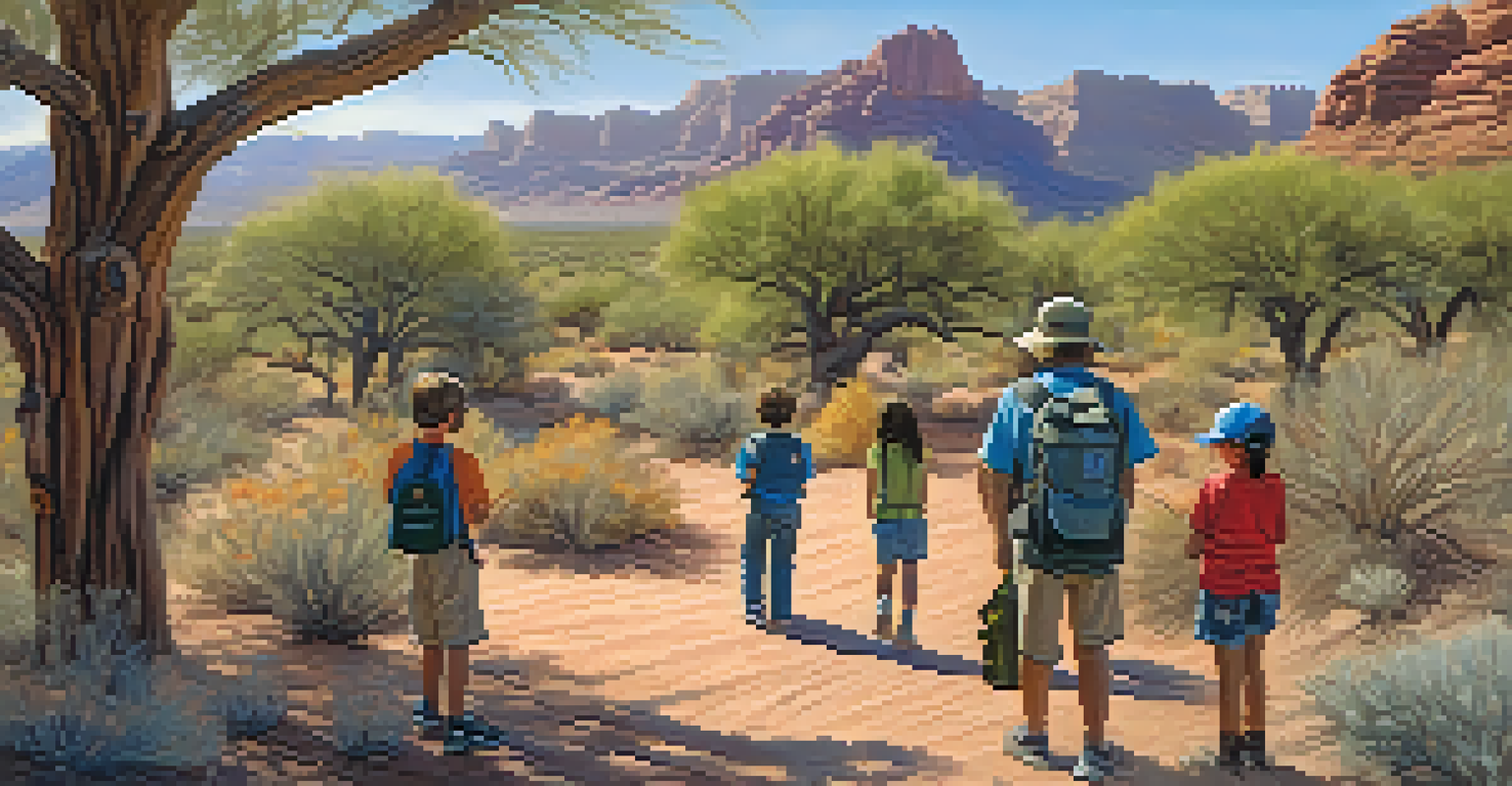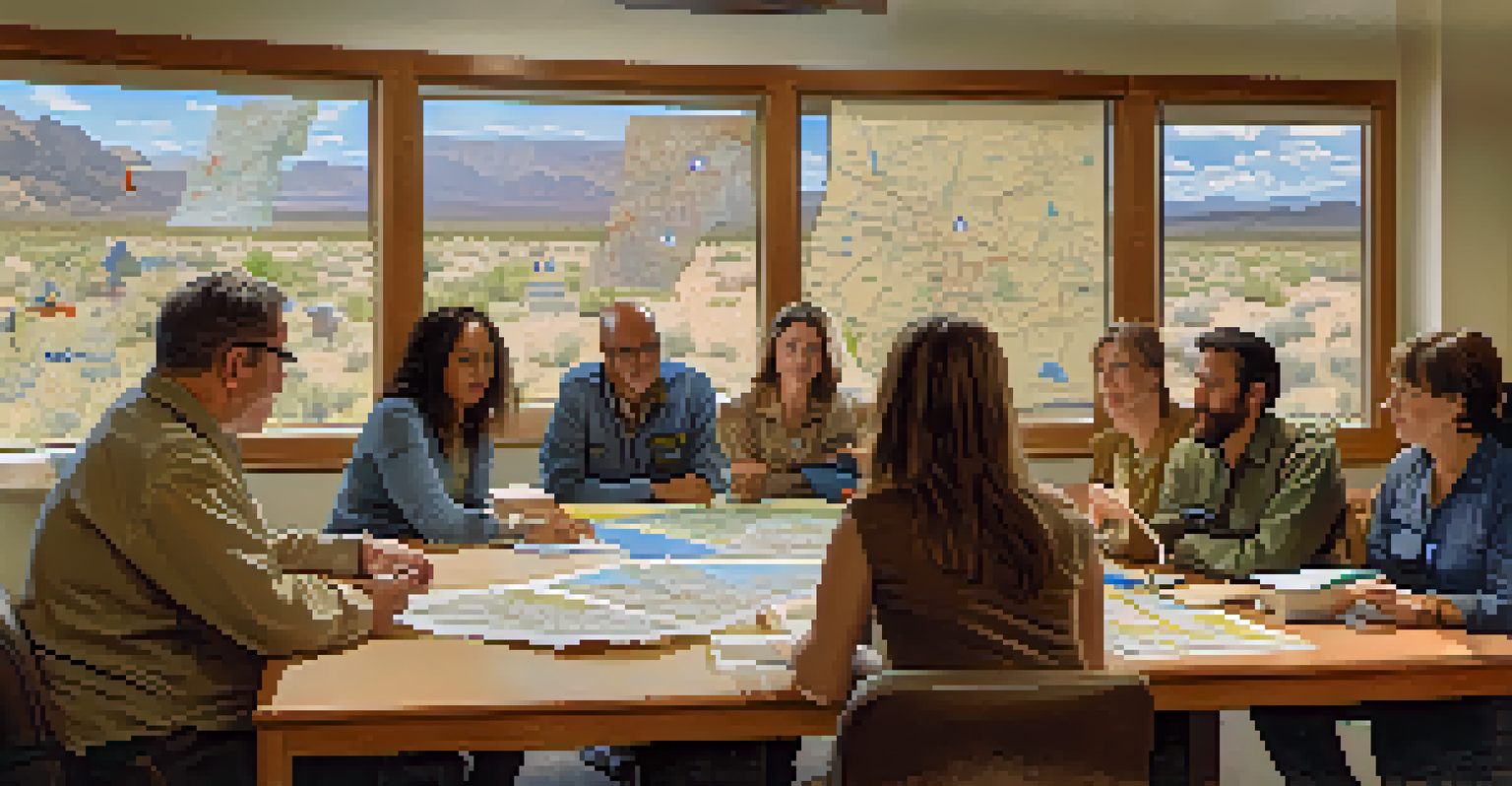Collaboration Between Arizona and National Wildlife Agencies

Understanding Wildlife Management in Arizona
Arizona is home to a diverse range of ecosystems and wildlife, making effective management crucial. The state’s unique geography, from deserts to forests, necessitates tailored strategies to protect its natural resources. Wildlife management involves monitoring animal populations, habitats, and ensuring sustainable practices to balance human and wildlife needs.
In the end, we will conserve only what we love; we will love only what we understand; and we will understand only what we are taught.
Collaborative efforts are essential in managing these resources effectively. The Arizona Game and Fish Department works alongside national wildlife agencies like the U.S. Fish and Wildlife Service. This partnership enhances resource sharing and provides access to broader expertise and funding opportunities, allowing for more comprehensive conservation strategies.
By aligning state and national objectives, both agencies can tackle challenges like habitat loss and species decline more efficiently. This collaboration fosters innovative solutions that are both effective and sustainable, ultimately benefiting the state's rich biodiversity.
Key Collaborative Initiatives in Arizona
Several initiatives highlight the successful collaboration between Arizona and national wildlife agencies. One notable program is the Arizona Wildlife Conservation Strategy, which aims to protect at-risk species through habitat restoration and management. This strategy is bolstered by federal resources and expertise, enabling more impactful conservation efforts.

Another example is the partnership in monitoring migratory bird populations in the region. National agencies provide critical data that informs state policies, ensuring that Arizona's wildlife management aligns with national conservation goals. This cooperative approach not only enhances data accuracy but also amplifies the effectiveness of conservation actions.
Collaboration Enhances Wildlife Strategies
Partnerships between Arizona and national agencies lead to more effective conservation efforts and resource sharing.
These initiatives demonstrate how collaboration can lead to significant improvements in wildlife management. By pooling resources and knowledge, Arizona and national agencies create a robust framework that supports both local ecosystems and broader environmental goals.
Challenges Faced in Wildlife Conservation
Despite the progress made, challenges persist in wildlife conservation efforts. Issues such as climate change, urban development, and habitat fragmentation pose significant threats to Arizona's wildlife. These challenges require ongoing collaboration to develop adaptable strategies that can respond to rapidly changing conditions.
The future will either be green or not at all.
Additionally, funding can be a limiting factor in implementing conservation programs. While federal support is invaluable, state agencies often face budget constraints that can hinder their efforts. Collaborative fundraising initiatives and grant applications become essential tools in overcoming these financial obstacles.
Ultimately, addressing these challenges necessitates a commitment to continuous communication and partnership between Arizona and national wildlife agencies. By working together, they can devise innovative solutions that not only protect wildlife but also foster community engagement and support.
Community Involvement in Wildlife Conservation
Community involvement plays a vital role in the success of wildlife conservation in Arizona. Local residents are often the first line of defense in protecting their natural surroundings. Public awareness campaigns and educational programs help engage communities, fostering a sense of ownership and responsibility towards local wildlife.
Collaborative efforts also extend to volunteer programs, where community members participate in habitat restoration and monitoring projects. This hands-on involvement not only benefits wildlife but also strengthens community bonds and enhances public appreciation for Arizona's natural heritage. Engaged citizens can serve as valuable advocates for conservation initiatives.
Community Engagement is Essential
Involving local residents in conservation initiatives fosters a sense of responsibility and strengthens community support for wildlife protection.
By building a strong network of community supporters, wildlife agencies can amplify their conservation messages and actions. When people feel connected to their environment, they are more likely to contribute positively to its preservation, creating a win-win situation for both wildlife and residents.
Educational Programs Promoting Wildlife Awareness
Educational programs are crucial in promoting wildlife awareness and conservation efforts in Arizona. Schools and community organizations often partner with wildlife agencies to develop curricula that highlight the importance of biodiversity and ecosystems. These programs aim to inspire the next generation of conservationists by fostering a love for nature.
Hands-on experiences, such as field trips and workshops, allow participants to engage with wildlife directly. Learning about local species, their habitats, and the threats they face can ignite a passion for conservation in young minds. This experiential learning cultivates a deep understanding of the interconnectedness of all living things.
By investing in educational initiatives, Arizona and national wildlife agencies can ensure that future generations are equipped with the knowledge and skills needed to protect their natural environment. Empowering individuals with this understanding is a key component in the long-term success of wildlife conservation efforts.
Research and Data Sharing Between Agencies
Research and data sharing between Arizona and national wildlife agencies play a pivotal role in informed decision-making. Collaborative research projects enable scientists to gather comprehensive data on wildlife populations, migration patterns, and habitat conditions. This information is essential for developing effective management strategies that address the unique challenges faced by Arizona's ecosystems.
Moreover, technology has transformed how data is collected and analyzed. Utilizing advanced tools like GPS tracking and remote sensing allows for more precise monitoring of wildlife movements and habitat usage. This technological collaboration enhances the capacity of both state and national agencies to respond proactively to emerging conservation issues.
Education Fuels Future Conservation
Educational programs inspire the next generation to appreciate and protect Arizona's diverse ecosystems through hands-on learning experiences.
By fostering a culture of sharing knowledge and resources, these agencies can enhance their effectiveness in protecting wildlife. In turn, this collaboration ensures that conservation strategies are grounded in solid scientific evidence, leading to better outcomes for Arizona's diverse ecosystems.
Future Directions for Collaboration in Wildlife Conservation
Looking ahead, the future of collaboration between Arizona and national wildlife agencies appears promising. As challenges evolve, so too must the strategies employed to address them. Continued engagement and innovation will be essential in adapting to new environmental realities, such as climate change and habitat loss.
Expanding partnerships with additional stakeholders, including local governments and non-profit organizations, can further strengthen conservation efforts. By creating a broader coalition, agencies can pool resources and expertise, driving more impactful initiatives that resonate within communities.

Ultimately, the journey towards effective wildlife conservation is an ongoing process that requires commitment and adaptability. By embracing collaboration and fostering a shared vision for Arizona's natural heritage, agencies can work together to ensure a sustainable future for wildlife in the state.